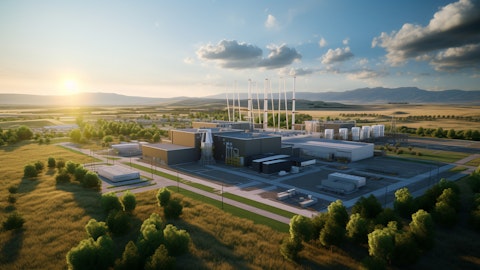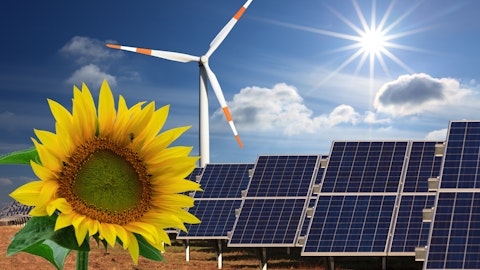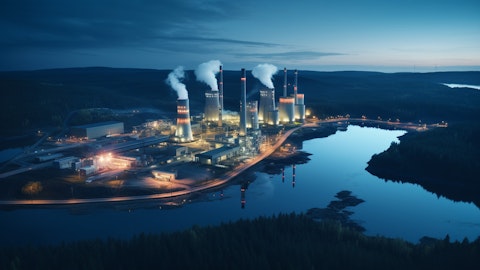Shahriar Pourreza: Okay, perfect. So we’ll stay tuned. And then lastly, John, on sort of the FEC, since the process disclosures had been made and obviously showed, FPL was clear of any kind of wrongdoing, there were some kind of disagreements with the FEC commissioners on the nonprofit matters. Is there an appeals path and would there be any further kind of information request to FPL or NextEra, or should we just close the books here?
John Ketchum: Yes, I think the way I look at it, Shahriar is plain and simple. FEC voted. They voted to close the matter. We’re now moving on, and I think this is behind us.
Shahriar Pourreza: Okay, perfect. That’s it, very comprehensive. Thank you guys, and congrats on the results.
John Ketchum: Thank you.
Operator: The next question comes from David Arcaro with Morgan Stanley. Please go ahead. Mr. Arcaro, your line is open. Is your phone muted accidentally? I’m sorry, we’ll need to go to the next questioner. The next questioner comes from Carly Davenport with Goldman Sachs. Please go ahead.
Carly Davenport: Hey, good morning. Thanks for taking the questions today. I appreciate it. I wanted to just ask one on the backlog. Good strength in the additions this quarter and we continue to see a lot of strength in the solar and the storage piece of it. Wind has been a little bit weaker. So I guess just as you think about the difference in the returns on those projects, are there any sort of implications for your financial guidance and your plan as you think about the mix that you’ve seen actually evolve versus what is in that base plan?
Rebecca Kujawa: Hi Carly, it’s Rebecca. I’ll take that question. Good morning. Let me start with probably the most important takeaways. First, obviously, Kirk and John highlighted our continued expectations and expressed the fact that we’d be disappointed if we didn’t meet the top end of those expectations as we’ve outlined. So that’s most important. Secondly, we continue to be comfortable with the overall development expectations as we also highlighted in the prepared remarks. And that’s consistent with what we’ve seen over time, as we’ve long stated. Obviously, there’s a mix in technologies we, four years in advance, are not always going to be predicting exactly where we’re going to be able to develop and what our customers are going to be interested in.
And notably, since we laid those expectations out for the first time, a lot did change, including the passage of the IRA. And that had both an impact on changing dynamics for our customers. Buying wind, which was largely in advance, the expectations that the incentives would ultimately wind down. And in the IRA, the introduction of the production tax credit for solar, which made solar more attractive than it was even before, as well as a standalone ITC for storage, so that really spurred demand for solar and storage. But if I can kind of take a step back and kind of pile into the question that Steve answered and some of the comments that John made earlier, we are seeing significant demand across the entire U.S. economy. That of course includes data centers, technology, AI driven compute demand.
But it is also manufacturing, the re-domestication of the important industries in the U.S. And it is also oil and gas and chemicals companies looking to get lower cost energy solutions into their mix that spurs a need for a lot of build. So as we look at our 300 gigawatts of products that are in development and the integrated solutions and solutions that we’re designing for our customers. I remain very optimistic about all of the technologies in various parts of the country. Wind is most economic in parts of the country. It’s going to be solar and storage, etcetera. So I love the portfolio approach. And from returns perspective, I think we continue to realize very attractive returns for all the technologies and of course, adjusted for the types of risks that we think we take.
So mid-teens for solar and above 20% levered returns for wind and storage technologies. So I think from an investor standpoint, that’s a very attractive proposition.
Carly Davenport: Awesome. Thanks for that, Rebecca. And then you mentioned in the prepared or the last question, you know, 15% CAGR for data center demand growth through the end of the decade. I guess as you think about some of these other drivers that you’ve mentioned of increased power demand in the U.S., how do you think that will drive kind of overall load growth? Do you have expectations there through the end of the decade?
Rebecca Kujawa: So we’ll have a lot more to say in terms of our expectations and certainly in context of a number of third party views at the investor conference. But I think it’s safe to say at this point that we see strong drivers for a long period of time, decades into the future, driving renewables penetration in electricity and electricity penetration into overall U.S. and energy consumption, which sets up terrific dynamics for us to continue to compete and create opportunities to invest capital for our shareholders at very attractive returns. So I love our opportunity set.
Carly Davenport: Great. Thank you for that color.
Rebecca Kujawa: Thank you.
Operator: The next question comes from Durgesh Chopra with Evercore ISI. Please go ahead.
Durgesh Chopra: Good morning. Thank you for giving me time. Maybe just, Rebecca on the topic of electricity demand growth, one of the questions we consistently get, I think John hinted on this, the 15% data center growth driving it is how quickly can you ramp up? So maybe can you just talk to that? Are there any constraints, whether its equipment, whether it’s sites, how quickly can the generation side of this, the renewable generation, can ramp up?
Rebecca Kujawa: Yes, Durgesh, I appreciate the question. I think a little bit of context is important. I think all of us, ourselves included, have really started talking about the significant change in load growth, really over the last year, maybe even the last six months. And you all very much appreciate that a development business, anything connecting to electrical infrastructure, usually talks in terms of years and sometimes a lot of years, depending on the market, to get something into place in the ERCOT [ph] market is maybe a couple of years and some markets in the Midwest that have had congested queues and some transmission constraints. That could be five to seven years. And obviously we’ve been working for a period of time.





